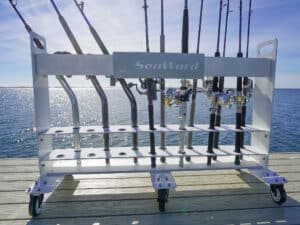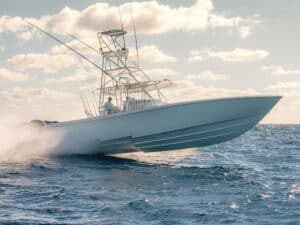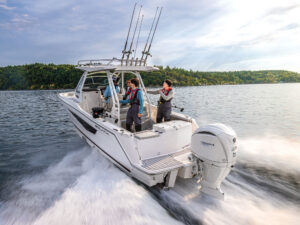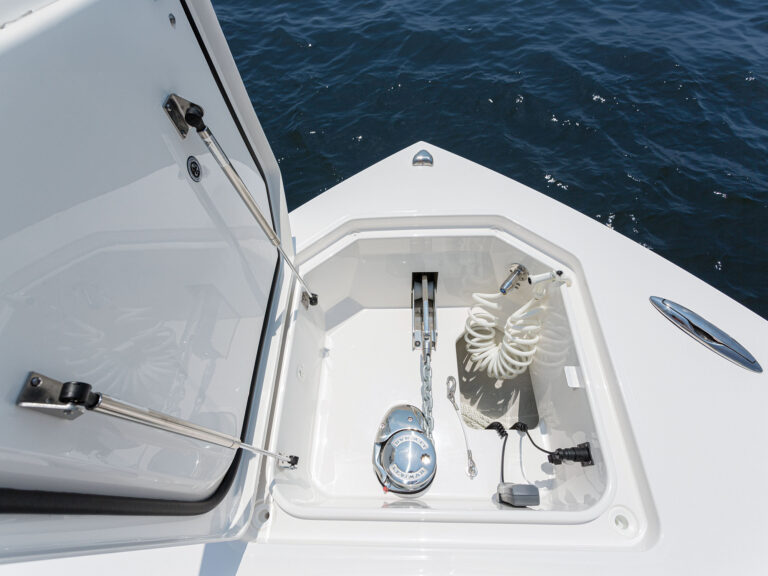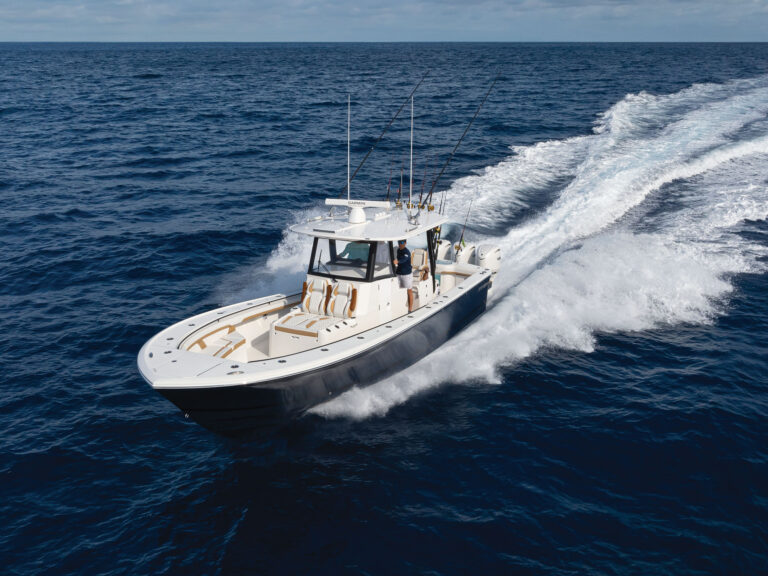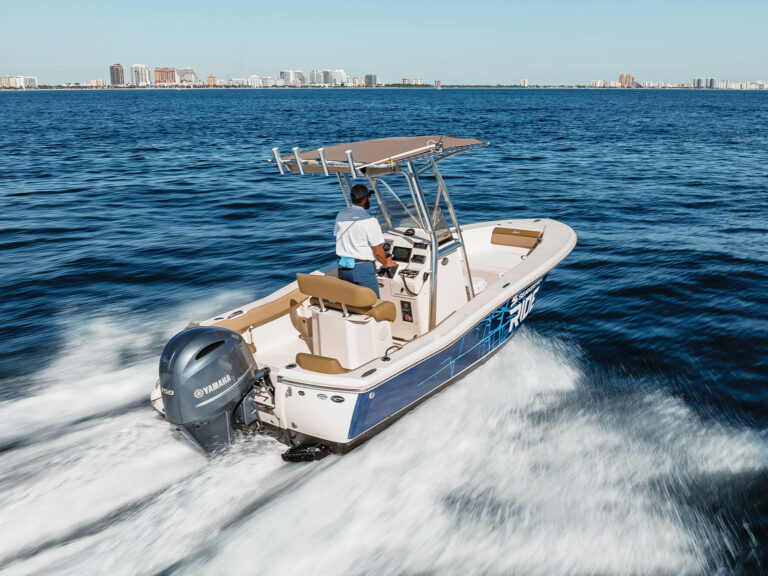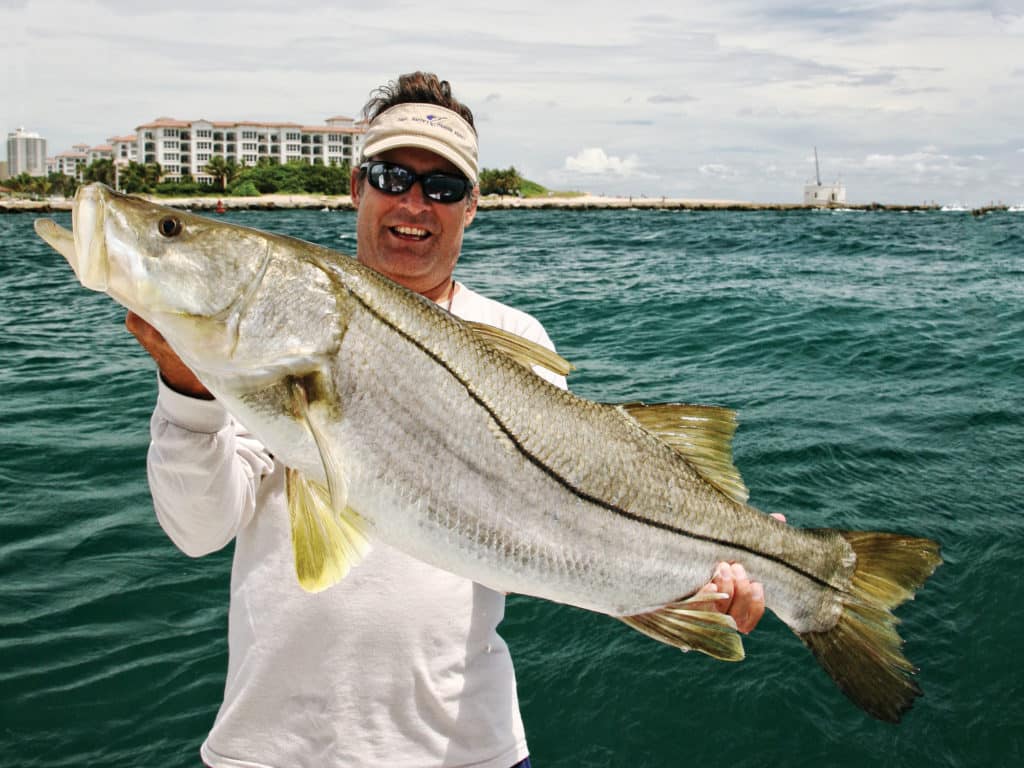
Unless fish are foraging at the surface, seawalls, canals and river mouths are just scenery to novice anglers. Seasoned experts, however, view these as intricate networks that attract numbers of fish, including trophy snook, tarpon, striped bass, flounder, grouper, seatrout or mackerel.
If you’re among the former group and decide to investigate such systems, be forewarned: Depression may set in once you realize the fishing opportunities you’ve been motoring past.
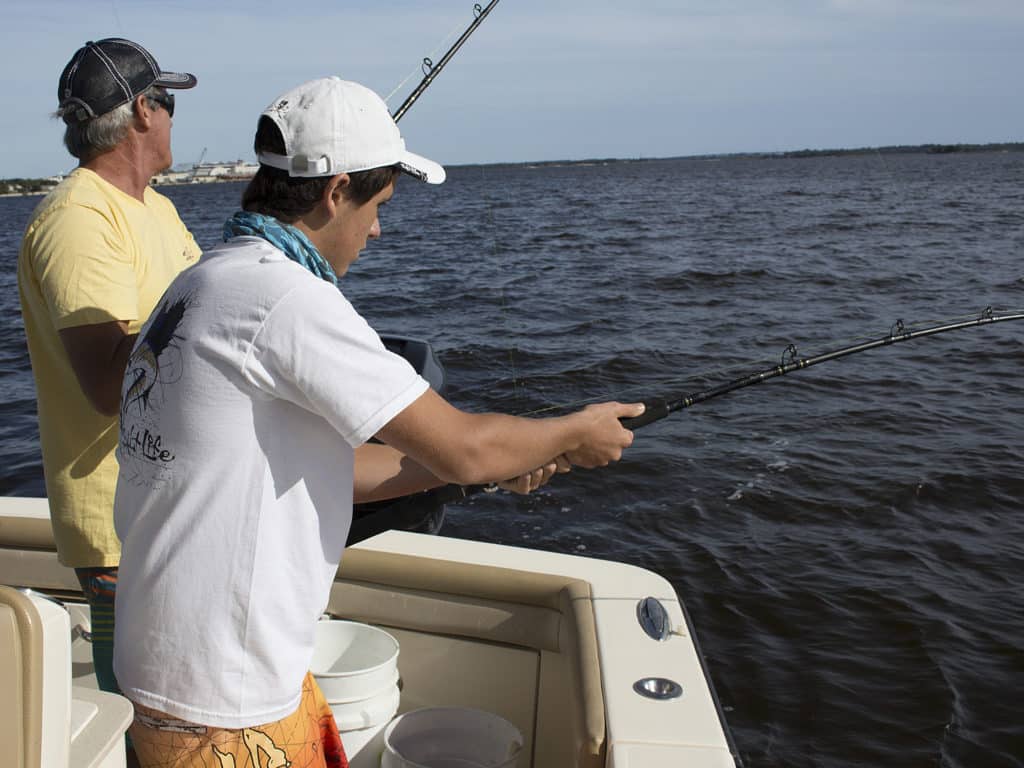
HISTORY REPEATS
The late Roy Knight, an old North Miami salt, caught the heck out of trophy snook in the early to mid-1970s. My cousin lived next door to Knight, and he’d call me when he saw the old man unloading a big snook or two. We routinely witnessed snook eclipsing 30 pounds, including one that scaled 42 pounds (a potential world record then, had Knight cared about getting his name in the record book — he didn’t). How he dialed in these big snook turned into a valuable lesson for my cousin and me.
Knight was a one-trick pony, but it was a hell of a trick. Land-based, he’d set up on the north side of a canal mouth that opened into Maule Lake. When the mullet were running, aided by an incoming tide, pods of them detoured into this canal from the ICW and continued into Maule Lake. Knight would snag a few live mullet (he swore you couldn’t fool big snook on tackle-shop mullet, no matter how fresh), cut them in half, and cast out a section. He used a wire leader and egg sinker heavy enough to hold bottom in the swift tide. He’d place two or three outfits in spike holders, loosen the drags, and wait for a snook to eat a bait. Then he’d advance the drag and catch his fish.
Knight’s trick was in his understanding that this side of the canal mouth had a pronounced shelf jutting into the channel, in contrast to the canal mouth’s barren southern landscape. He knew the formation deflected the brunt of the current, and that big snook and the occasional black drum would lay up here and rest between ambushes. He was dead on. And by the way, for any Miamians who think they’ve just acquired a hot spot, condos now grace that canal bank and northern-side mouth, though the shelf still exists.
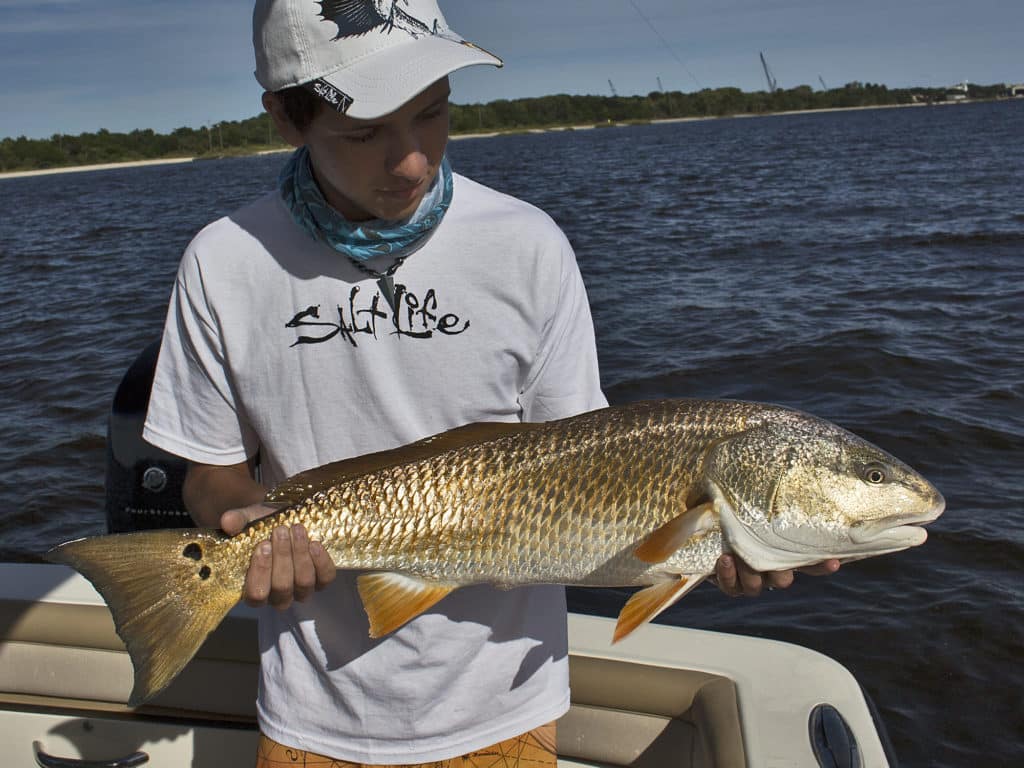
Around canal and small river mouths, look for similar ambush-friendly geography. Then figure out which tide direction and stage will likely make the fish come alive, and experiment. Consider too any influence bait migrations might have during tide variations.
Rips and back eddies form when swift tides in canal and river mouths -encounter -obstructions and create prime predator stations. Back -eddies, formed by current, materialize on the inside of rips. These current rips sweep up forage and often deposit it in their back eddies, where game fish gorge while expending less energy. Bottom topography often dictates how pronounced any rips or eddies will be and their potential to collect life. The chemistry is usually different along opposite sides of a mouth and at both ends. Therefore, if one rip or back eddy isn’t producing, try the other one.

ELECTRONIC SURVEILLANCE
Consult your sonar for any sizable bottom holes or depressions, as well as rock formations, near these mouths. Game fish feed where these features break current flow. If playing the edges is slow, probe structures toward the middle of these systems. The bite can be surprising.
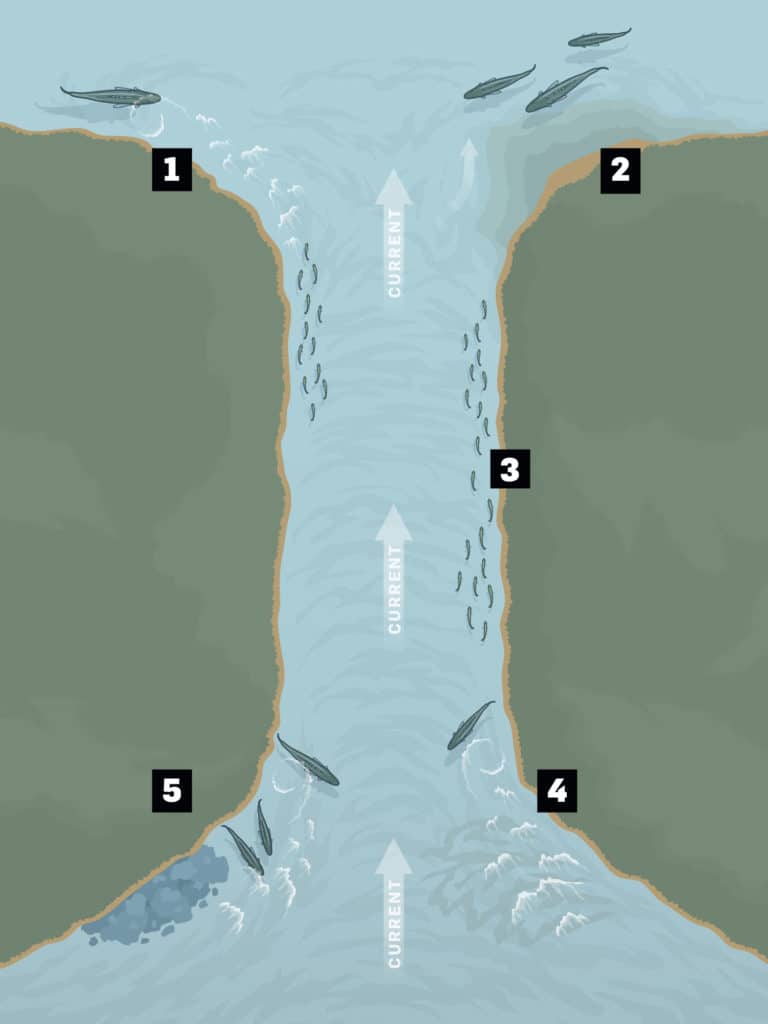
INLETS AND PASSES
Submerged rocks, shell or sand bars, jetties and other natural or man-made structures in inlets, passes and coastal rivers break the current and create eddies where game fish wait comfortably in ambush for baitfish and crustaceans, without facing the full brunt of the moving water.
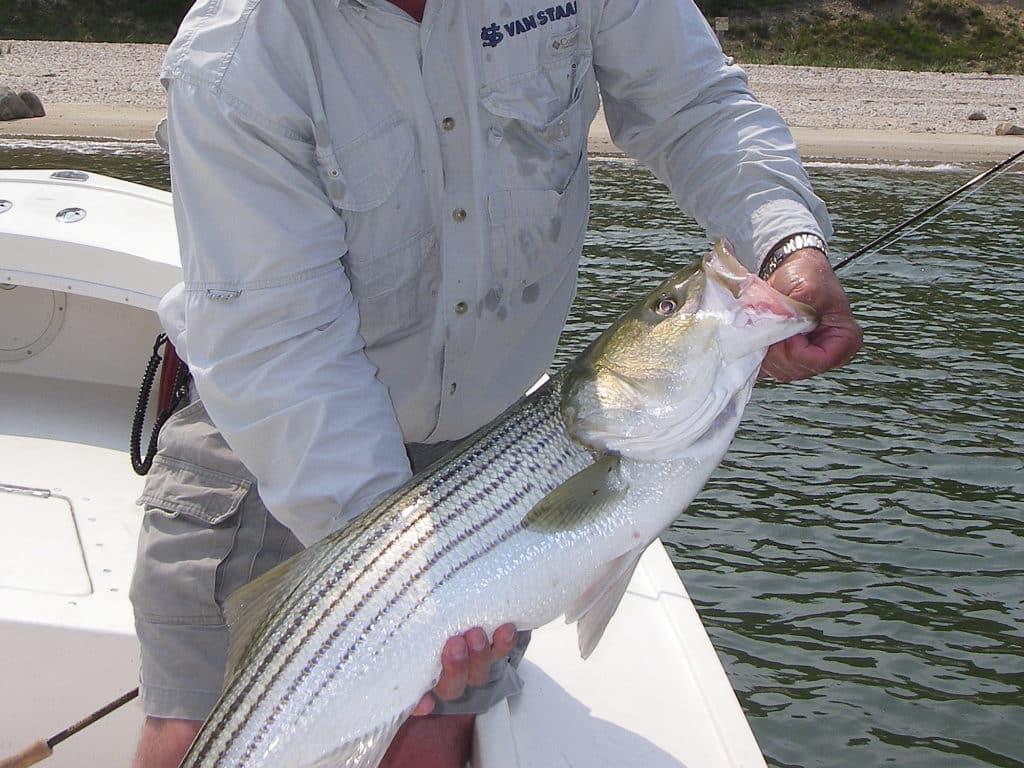
LEDGES AND SEAWALLS
Quality fishing exists in the intracoastal waterway (ICW) and along seawall–lined canals and rivers. Strategies for -locating fish within these systems are nearly the same. Examine both sides of the channel for imperfections such as protrusions, deep cuts back into the ledge, and bends in canals, rivers and inlets. Also search out rocks, rubble, depressions, peaks and sharp depth -fluctuations. These all provide potential game-fish feeding stations.

SEAWALL TOPOGRAPHY
Seawall deviations as small as a few inches often attract game fish by trapping bait or deflecting current and bait off the wall. Potential spots include adjoining seawalls that don’t line up perfectly, pockets between baffled walls, and spaces between rock beds. The greater the depth next to a seawall, the more potential it has as an ambush spot.
Drain pipes along seawalls may become major feeding stations when they carry forage from creeks, lakes or tributaries. And don’t overlook dams on canals: When they’re open, the blitzes can be nothing short of breathtaking. Also give them a try when they’re closed. Sometimes a fish or two take up station around the structure, which attracts bait in its own right.

LIGHTS AND STRUCTURE
Even during the day, don’t neglect lights along seawalls. If they’re operational at night, baitfish and game fish gather around them. During the day, these same fish won’t wander far from a consistent feeding station. Devote time to overhanging vegetation as well; it provides cover for bait and feeding zones for game fish.
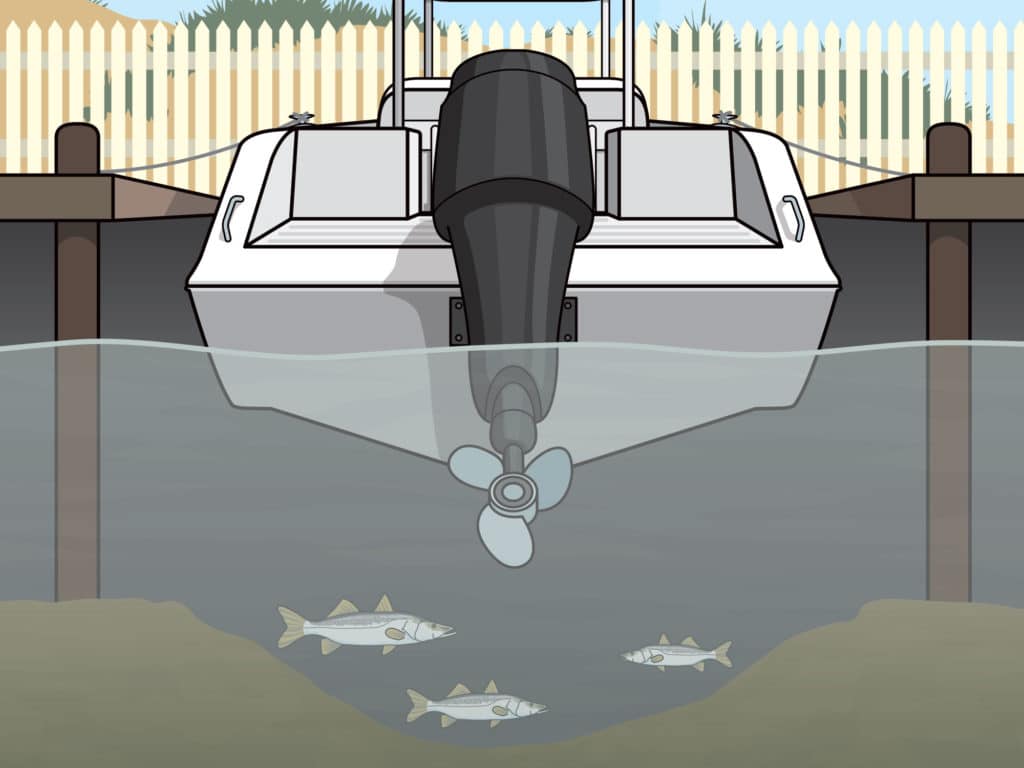
DOCKS, MARKERS AND BRIDGES
Like seawalls, lighted docks attract fish. A dock housing a large vessel is more apt to gather fish than one with a small boat. That’s because the vessel’s props churn out a depression on the bottom each time the boat leaves and returns. These holes create environments for fish, where they avoid current as well as forage on bait swimming by. What’s more, such depressions on mud bottoms retain warmth longer, making ideal winter fishing spots.
ICW markers are similar to dock pilings. Those situated on rough sections of hard bottom have more potential to attract life than those over smooth, featureless bottom such as sand or mud. Bridge pilings are basically the same. Find any with heavy barnacle growth or those adjacent to uneven hard bottom. -Pilings a few feet off the bank or along a ledge create lanes for bait to traverse.
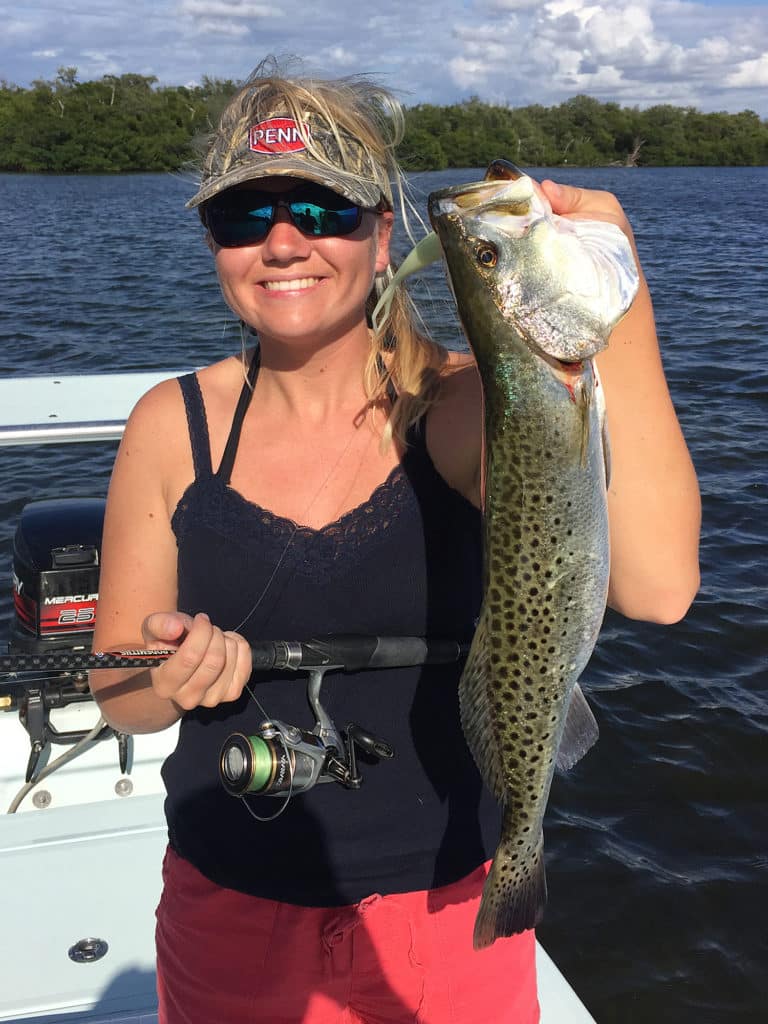
I’ve enjoyed many days in Biscayne Bay, catching snapper, seatrout, jacks, snook, tarpon and the -occasional grouper by simply bouncing a shrimp-tipped bucktail among the ICW markers and bridge pilings. Best of all, there are plenty of markers and bridge pilings and few people paying attention to them.

